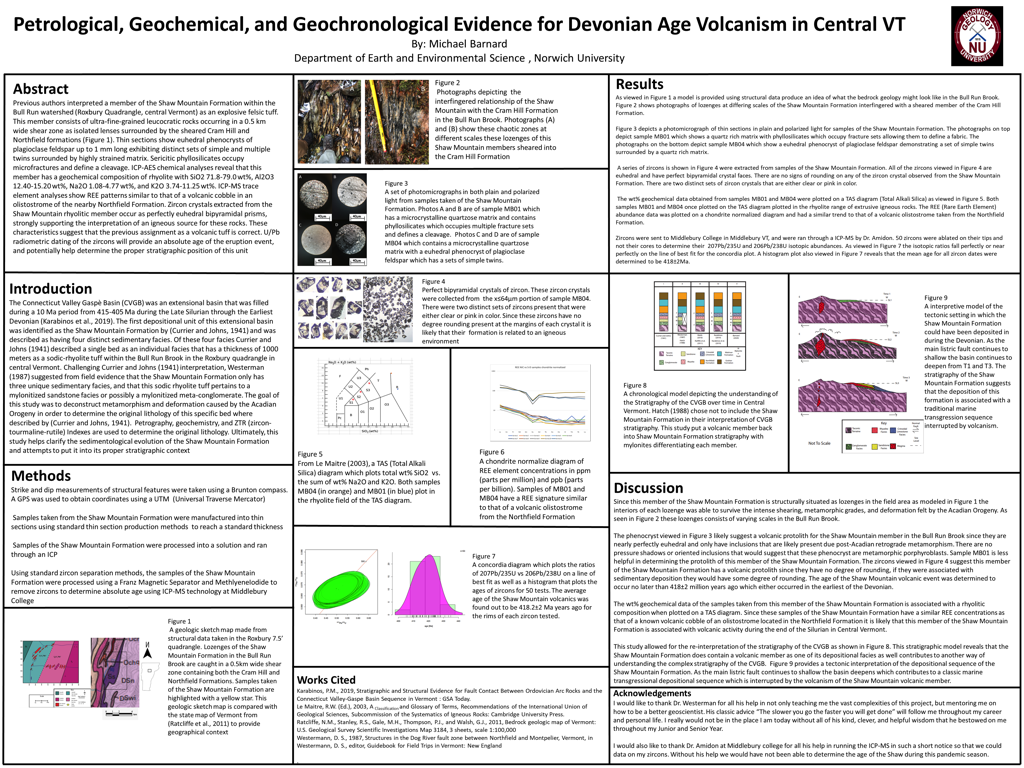
Petrological, Geochemical, and Geochronological Evidence for Devonian Age Volcanism in Central VT
Michael Barnard
Previous authors interpreted a member of the Shaw Mountain Formation within the Bull Run watershed (Roxbury Quadrangle, central Vermont) as an explosive felsic tuff. This member consists of ultra-fine-grained leucocratic rocks occurring in a 0.5 km wide shear zone as isolated lenses surrounded by the sheared Cram Hill and Northfield formations (Figure 1). Thin sections show euhedral phenocrysts of plagioclase feldspar up to 1 mm long exhibiting distinct sets of simple and multiple twins surrounded by highly strained matrix. Sericitic phyllosilicates occupy microfractures and define a cleavage. ICP-AES chemical analyses reveal that this member has a geochemical composition of rhyolite with SiO2 71.8-79.0 wt%, Al2O3 12.40-15.20 wt%, Na2O 1.08-4.77 wt%, and K2O 3.74-11.25 wt%. ICP-MS trace element analyses show REE patterns similar to that of a volcanic cobble in an olistostrome of the nearby Northfield Formation. Zircon crystals extracted from the Shaw Mountain rhyolitic member occur as perfectly euhedral bipyramidal prisms, strongly supporting the interpretation of an igneous source for these rocks. These characteristics suggest that the previous assignment as a volcanic tuff is correct. U/Pb radiometric dating of the zircons will provide an absolute age of the eruption event, and potentially help determine the proper stratigraphic position of this unit

